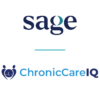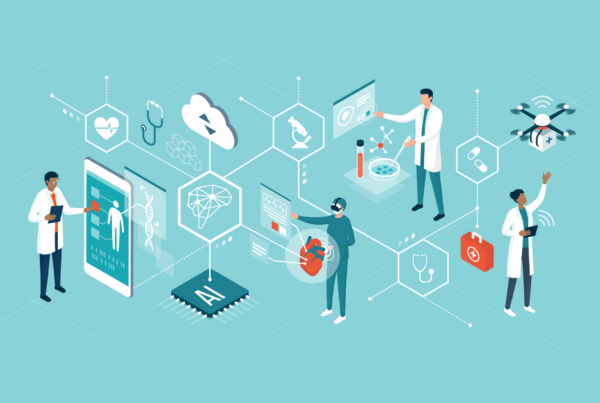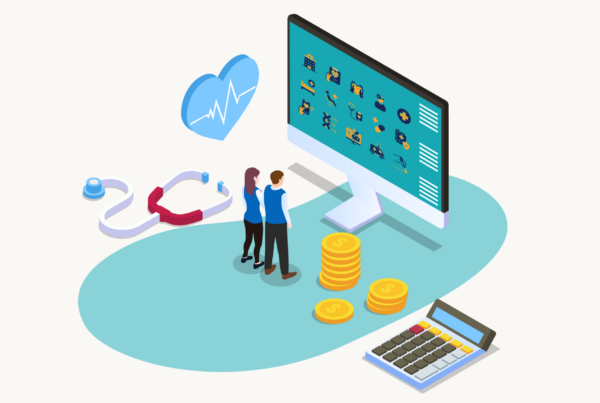In the halls of HLTH 2022, the ears of J.P. Morgan’s upcoming Healthcare Conference might have been burning.
There’s a good reason for that. HLTH’s tight Las Vegas layout beats the high cost, complex logistics, and frequently moody Frisco weather at Morgan — literally and figuratively in an economic down year. Work-life balance applies equally to the conference circuit, evidenced by the investment bankers at HLTH who were begging people to bypass JPM so they could too. It’s the first time in two decades that even big-time players are likely steering clear.
Logistics aside and to quote James Carville, there’s an obvious reason for the avoidance: It’s the economy, stupid. Skipping an investor conference makes sense when many private equity deals have run dry, long-time tech bulls are making mass layoffs, and the general feeling that everybody just kind of wants 2022 to be over.
Welcome to the recession-not-recession environment, where healthcare’s obstacles still loom, only now with lower profit margins and a more burned-out workforce left standing to solve them.
But hey, it’s not all bad. You have to be an eternal optimist, or at least a cock-eyed one, to keep pressing your shoulder against the industry’s biggest challenges — access and affordability, value-based payment (VBP), health equity — and expecting them to budge.
These and other topics dominated HLTH 2022. Held November 13-16 and now in its fifth year, the self-proclaimed “#1 Innovation Event” in healthcare is becoming what HIMSS used to be: a place to see and be seen, to learn, share, and commiserate.
Even so, and as with any conference, it’s outside the sessions and planned socials that many of the most important conversations occur. These unofficial conversations left me with some surprising insights, which I’ll shortly summarize and outline in five specific takeaways. But first, a quick trip in the way back machine.
What Inc. predicted in 2016 has come to pass: the ACA spawned a “gazillion-dollar startup machine,” fueled by new players and the innovation arms of legacy stakeholders. Everybody was thinking big (and kung-fu fighting). But what I think we’ve forgotten is the power of small. Here’s how we can remember:
1. Reclaim our hidden, collective wisdom. It’s really the small parts of problems that move the needle. Combining the macro and micro and focusing first on what’s achievable can be applied to everything from markets to service lines to care settings. More on this below.
2. Understand that we don’t understand. For all of the macro masterclasses we’ve been teaching each other, VBP and interoperability remain unsolved in big ways after more than 10 years of try. To affect macro trends like this one, we’ll need to start micro, with solutions that directly impact patient access, such as accurate and up-to-date provider directories.
3. Think local. Despite the importance of size and scale, healthcare is still very local. Market forces play out in MSAs and their surrounding communities in disparate ways requiring hyper-focused solutions. Case and point? Health equity, where it’s going to take actionable data at the sub-ZIP Code level to calculate social risk and actually do something about it.
4. Zero in. Service lines and settings are where meaningful, incremental gains can be made. Think about conditions such as End-Stage Renal Disease (newly covered by Medicare Advantage) and ask questions like, “Hey inpatient facilities, what are you actually best at?” (as hospital-at-home programs grow). These offer points of congruence that all parties can act on.
5. Keep calm and infant on. If Earth’s history was expressed in 24 hours, we humans only joined the party two minutes ago. That said, healthcare as we know it probably sits at a zeptosecond, the smallest unit of time ever recorded. And if you thought progress on the now Quintuple Aim was lagging, consider that big-ticket items like digital transformation are still in their infancy.
These observations — from HLTH and every day spent in healthcare’s trenches — should encourage. I keep thinking about how lucky we are in this industry. There are so many of us who want to help solve problems and there are lots of companies that are working hard and making a difference. We just need to add a little unvarnished and nuanced perspective to our big moves.
The watercooler conversations that happen at places like HLTH (and maybe even J.P. Morgan) will help. After nearly three years of remote and hybrid work, we’re thirsty for all those conference sidebars and to drink from the firehose again. Maybe this time just in smaller sips.






